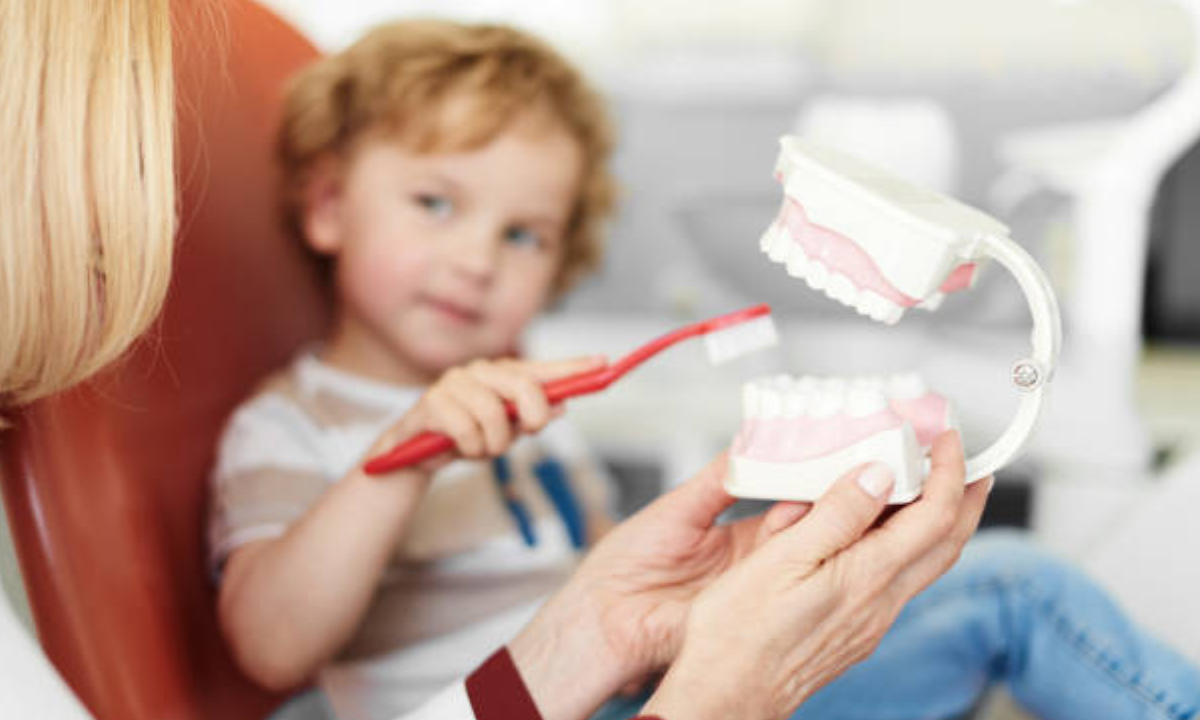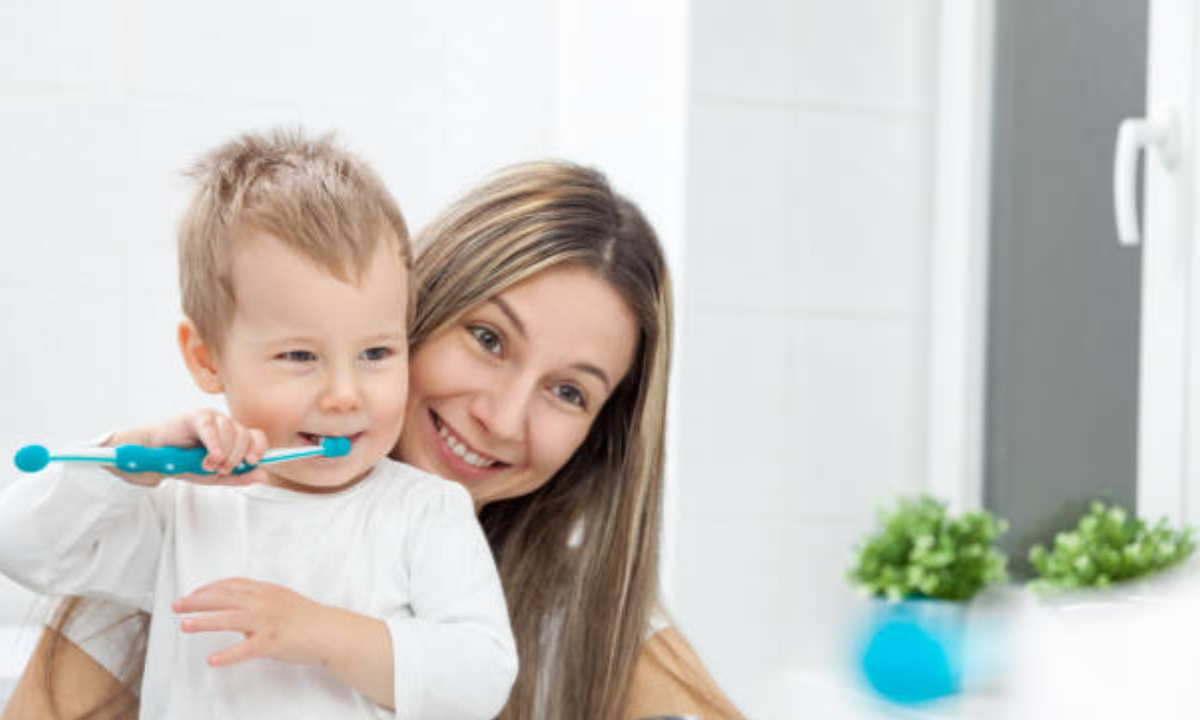Ensuring your child’s oral health starts with choosing the right toothbrush and toothpaste. Proper dental care in the early years can have a long-lasting impact on their overall dental health, making it essential for parents to make informed choices. While brushing and flossing are vital habits, using the appropriate toothbrush and toothpaste suited to your child’s age and oral needs is equally critical. With so many options available, parents often face confusion regarding what works best for their kids. In this guide, we’ll discuss everything you need to know about selecting the right toothbrush and toothpaste to keep your child’s smile bright and healthy.
Highlights of Pediatric Dental Care
Choosing the right toothbrush and toothpaste is just one aspect of comprehensive pediatric dental care. Finding a trusted dental clinic in Whitefield, Bangalore is equally important to ensure your child receives expert guidance from a kids’ dentist. Dental Clinic offers specialized services for children, including preventive care, regular check-ups, and advice on the best oral hygiene practices for kids. A good pediatric dental clinic will not only provide treatment but also educate parents and children on maintaining a healthy smile through correct brushing techniques and selecting the best oral care products.
Why Choosing the Right Toothbrush Matters
Your child’s toothbrush plays a pivotal role in maintaining their oral hygiene. An ill-suited toothbrush may not effectively clean their teeth or could even cause damage to their sensitive gums. Here are some key considerations when selecting the right toothbrush for your child:
- Size and Shape of the Brush: A toothbrush with a small head is ideal for a child’s mouth, allowing them to reach all areas effectively. Brushes with large heads may not fit properly in smaller mouths and can cause discomfort while brushing.
- Bristle Type: Soft bristles are always recommended for children, as they are gentle on the gums and enamel. Hard bristles can be abrasive and may lead to gum irritation or enamel erosion, especially in younger children.
- Handle Grip: Look for toothbrushes with handles that are easy for small hands to grip. Many children’s toothbrushes come with ergonomic designs or fun, rubberized grips that make brushing easier and more enjoyable for kids.
- Electric vs. Manual Toothbrushes: While manual toothbrushes work perfectly fine, electric toothbrushes may be more effective for some children, especially if they struggle with proper brushing techniques. Electric toothbrushes with a timer can also help ensure your child brushes for the recommended two minutes.
Choosing the Right Toothpaste for Kids
Toothpaste choice is just as important as selecting the right toothbrush. However, with the variety of flavors and ingredients on the market, it’s crucial to find a toothpaste that is safe and effective for your child’s age. Below are some factors to consider:
- Fluoride Content: Fluoride is essential in strengthening tooth enamel and preventing cavities, but it’s important to use the right amount depending on your child’s age. For children under three, use only a rice-grain-sized amount of fluoride toothpaste. For children between three and six, a pea-sized amount is recommended.
- Taste and Flavor: Many kids dislike the strong minty taste of adult toothpaste. Fortunately, there are child-friendly flavors like bubblegum, strawberry, and fruit that can make brushing a more pleasant experience for them.
- ADA-Approved Toothpaste: Ensure that the toothpaste you choose is approved by the American Dental Association (ADA) or your local dental authority. ADA-approved toothpaste contains the right amount of fluoride and has been tested for safety and efficacy.
- Avoid Harsh Ingredients: Avoid toothpaste that contains abrasive ingredients like baking soda or charcoal. These can be too harsh on your child’s developing teeth and gums.
When to Start Brushing Your Child’s Teeth
Good oral hygiene should begin early, even before your child’s first tooth appears. You can start cleaning your baby’s gums with a soft, damp cloth after feedings. Once teeth start to come in, switch to a soft-bristled toothbrush designed for infants. By the time your child reaches the age of two or three, they should be brushing with a small amount of fluoride toothpaste, under supervision.
Establishing Healthy Brushing Habits
- Supervise Brushing Until Age 8: Children under the age of eight often lack the fine motor skills to brush their teeth effectively. Supervise their brushing routine to ensure they are cleaning all areas of their mouth thoroughly.
- Make Brushing Fun: Turn brushing into a fun activity by letting your child choose their toothbrush with their favorite character or color. You can also play their favorite song while they brush to help them brush for the full two minutes.
- Use a Timer or App: Many parents find it helpful to use a timer or a brushing app to ensure their child brushes for the recommended two minutes. Some electric toothbrushes even come with built-in timers for this purpose.
Regular Dental Check-ups
Along with proper brushing habits, regular visits to a kids’ dental clinic are essential for maintaining your child’s oral health. Professional cleanings and check-ups every six months can help prevent tooth decay, identify potential issues early, and keep your child’s smile healthy. Dental Clinics offer comprehensive care for kids, including dental cleanings, fluoride treatments, and cavity prevention.
Transitioning to Adult Toothbrushes and Toothpaste
As your child grows, they will eventually transition to adult toothbrushes and toothpaste. Typically, around age 8-10, you can introduce adult-sized toothbrushes and fluoride toothpaste with higher fluoride concentrations. It’s essential to consult your dentist to ensure the transition happens at the right time for your child’s specific oral health needs.
Additional Tips for Maintaining Your Child’s Oral Health
- Replace Toothbrush Regularly: Replace your child’s toothbrush every three to four months or sooner if the bristles appear frayed. A worn-out toothbrush is less effective at cleaning teeth and may harbor harmful bacteria.
- Limit Sugary Snacks and Drinks: Sugar is one of the leading causes of tooth decay in children. Limit sugary snacks, juices, and sodas, and encourage your child to drink water throughout the day.
- Encourage Flossing: Once your child’s teeth start to touch, introduce flossing as part of their daily routine. Kids flossers with easy-grip handles can make the process easier for younger children.
In conclusion, choosing the right toothbrush and toothpaste for your child is crucial for their oral health. Parents should consider factors like brush size, bristle type, fluoride content, and flavors when making a decision. By combining proper brushing techniques, regular dental visits to trusted clinics like Whitefields Dental Clinic, and a healthy diet, you can set the foundation for your child’s lifelong dental health.
Growing Smile Dentists is a well-known dental clinic in Whitefield that offers pediatric dentistry. Many parents are happy with the friendly and caring service offered and good online reviews praising the doctor’s patience and attention to child comfort.

